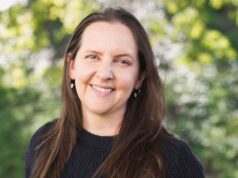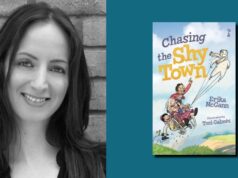Tony Flynn examines two contrasting views of the Irish landscape
Rural landscapes feature prominently in many works of children’s fiction, and tend to espouse the concept that embracing nature is something that is pure, healing and empowering for children. It is in the lush greenery of the outdoors, rather than the cold confines of the classroom or the smoggy city streets, that children ultimately discover their true character. Rural landscapes make for powerful backdrops to explore concepts of childhood because these landscapes evoke the idea of something vast, formidable, challenging and full of endless possibilities. Both The Turf-Cutter’s Donkey (1934) by Patricia Lynch and Michael of Ireland (1926)by Anne Casserley are examples of Irish children’s literature that focus on childhoods set against the backdrop of the rural landscape.
At face value, both texts seem quite similar. They both concern children who adventure through the Irish landscape, and both include elements of history and mythology—particularly emphasising a sense of shared history that seems inherent to the Irish soil by including such characters as the White-Horned Bull of Connaught who so stoked the jealousy of Queen Maeve (in Michael of Ireland) or the Firbolgs and their battle with the Danaans (in The Turf Cutter’s Donkey); they both strike very different tones, however, in terms of their approach to the articulation of childhood. Where The Turf-Cutter’s Donkey is an exciting story full of adventures, Michael of Ireland evokes a decidedly more melancholic atmosphere. Each book does this not so much through their evocation of landscape, but rather in their differing approaches to the idea of family and the home space.

In The Turf-Cutter’s Donkey, Eileen and Seamus are brother and sister, and this familial bond is a crucial one. Family and the home space are central to their story, and no matter what their adventure may be, for them, a successful end must ultimately be to return safely to the family home. That is where their parents are and that is where they belong. In Michael of Ireland, however, illustrated by the author’s darkly evocative pictures, Michael has no sister, nor does he have parents. There are several instances in the book where Michael asserts his autonomy, stating as he does to the White-Horned Bull, ‘I belong to myself’. This attitude makes him a striking character, but there is a kind of sadness in the story when seeking to explore the reality of Michael’s situation, because he has no family, and it appears he has no home. True, he is often given a roof by the ‘wise old woman’, who seems the closest thing Michael has to a guardian, but this is never described as Michael’s home, rather it is referred to as ‘the house of the old woman’. One cannot help but be a little suspicious of this character. How has she become the self-styled guardian of this young boy? It cannot be insignificant that Casserly chooses to open her book with a quotation from W.B. Yeats’s poem, The Stolen Child, and Michael is repeatedly warned to beware of fairies, but could Michael in fact already be the stolen child referenced in Yeats’ poem?
He has no home, no parents, and he does not even seem to have the same sense of origin as the Stolen Baby who features in perhaps the most heartrending story in Casserly’s book—the chapter entitled ‘May Eve’—in which Michael offers help to a baby who wishes to get home to the place from where the fairies had stolen him long ago. The baby is ultimately told that his home no longer exists. Though the cottage may stand, to travel back home he would need to travel back in time. This is a devastating thing to hear, but at least the baby has some sense of who he was before he was taken: that he belonged and that he was missed. Michael has no such comfort, and while this land of talking animals and magical creatures is no doubt compelling, Michael does not even feature in the final story of Casserley’s book.
That is the extent to which he is lost. He is not even the centre of his own narrative, and that narrative is littered with stories of frustrated and ultimately failed attempts at constructing family and attaining the home space, from the Stolen Baby’s plight to Drimin the Cow’s frustrated attempts at adopting a child of her own. They seem to evoke a creeping sense of the uncanny rather than the familiar. Michael is ‘of Ireland’, whereas Seamus and Eileen are ‘in Ireland’, and whenever something threatens to take one of them and incorporate them into another narrative, however alluring it may be to give over into the fantasy or the history of their land, as Seamus in particular is often tempted, the two children always remember where they truly belong. Eileen and Seamus have the grounding and the comfort of their home to centre them and to call them back to their parents, and this sense of familial belonging is something that Michael lacks.
There is a moment in J.M. Barrie’s book of Peter Pan, Peter and Wendy (1911), where the author comments on how Peter would sometimes cry in his sleep, plagued by bad dreams that relate in some way to the mystery of his being. This suggests at least a subconscious longing for something that the character cannot quite define, although in his waking moments Peter steadfastly rejects the comforts (or confines?) of the family home space. Michael reacts in a similar way when he sees the cottage where the Stolen Baby once lived. ‘I do not like the look of that cottage light now at all, and I do not think that it can be a nice place.’ Perhaps he is wary because it is May Eve, and this is a dangerous night he has been warned about. It might also be, however, that he fears the home space in general. By way of comparison, towards the end of The Turf-Cutter’s Donkey, and after the battle between the Danaans and the Firbolgs, when the leader of the Danaans suggests that Eileen and Seamus must stay with them, Eileen knows well enough that she is in a story of long ago, and that she and her brother must live in the present: ‘this all happened long ago. You belong to the past. We must live in our own time.’ In many ways time is the home of our very being. We can change our circumstances and our perspectives, but we cannot change our time, save in dreams or in fantasy.
Seamus and Eileen are of their time, whereas Michael is of Ireland. Seamus and Eileen are always called home, but Michael stays in the open, with the fairies and the leprechauns and the talking animals of childhood dreams. Perhaps The Turf-Cutter’s Donkey is a story of the soil,whereas Michael of Ireland is a story of the soul. Both can be found within the Irish landscape, and perhaps an honourable objective for any reader is to acknowledge and respect both the soul and the soil of our native lands.
By Tony Flynn











